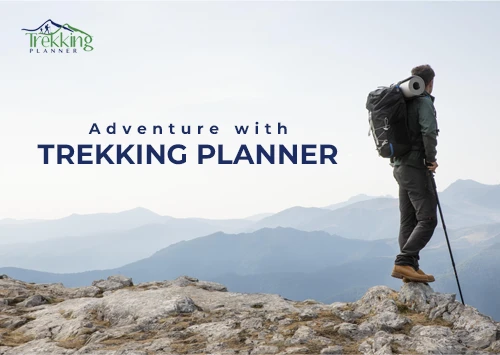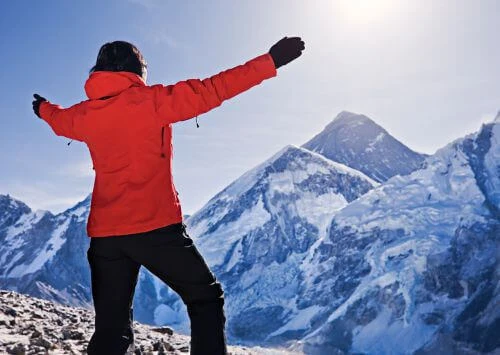The Nepalese Himalayas have been silent for too long. Since the political protests of September 2025, Nepal is now entering a period of deep recuperation and welcome. To travelers who are curious about the safety of Nepal and whether it is safe to revisit the nation, the answer is yes. Since the protests on September 8 and 9, Nepal is now in a healing phase, where things have cooled down, and it's safe to say that Nepal welcomes you back to its traditions, festivals, and cultural immersion.
The Background: What happened in September 2025?
On September 4, the government of Nepal introduced a regulation requiring social media platforms to register with the authorities. The social media platforms included Facebook, X (formerly Twitter), YouTube, WhatsApp, Instagram, etc. A total of 26 apps, including the aforementioned ones, were banned by the government.
However, before the banning of social media, there was widespread discontent among the younger generation, popularly known as "Gen Z," regarding the severe corruption, nepotism, economic hardship, unemployment, and misuse of authority or power. While the Nepalese were at peace and coping with all these hardships, the decision to ban social media triggered all these reasons, rather than being an isolated cause.
On September 8, 2025, a mass street protest was led by youth officially known as Gen Z, who swept across Kathmandu and other cities in Nepal. The protest was supposedly a peace protest against corruption and the banning of social media platforms. The Gen Z carried placards and wore school uniforms in many cases. Slogans include 'Say No to Corruption", "The Time is Now Wake Up Nepal", "Stop the Ban on Social Media", and "Stop Corruption, not Social Media". The peace protest then quickly turned south, resulting in a clash between the youths and police officials. The clash resulted in the death of at least 19 individuals, with hundreds injured, which triggered a Gen Z protest the following day.
The protesters began to storm into the Parliament building in Kathmandu by breaking through the barricades. The security forces used tear gas, water cannons, rubber bullets, and live rounds. Then, a curfew was imposed in Kathmandu, and schools were closed in several areas. Hospitals were filled with wounded in Civil Hospital, Everest Hospital, and National Trauma Center.
Then, with intense pressure, the government lifted the ban on social media, and curfews remained in effect. The Home Minister and the Prime Minister resigned from their positions as the protesters escalated the situation by attacking the homes of politicians, setting property on fire, including police stations and government buildings.
Is Nepal Safe After the Gen Z Protests in September?
Yes, Nepal is safe for travelers again after the September 2025 Gen Z protests. Although the demonstrations created temporary disruptions in Kathmandu and a few major cities of Nepal, but the situation has now stabilized. Curfews have been lifted, public spaces are open, and communication services are restored. The tourism industries such as hotels, trekking lodges, and traveling agencies are working in full capacity and domestic and international flights are operating on time.
Tourists who will visit soon will be rewarded with peaceful streets, open hiking paths and the spirit of community sustainability. This time is also known as the best season for travel and trekking in Nepal. With clear skies, pleasant weather, and beautiful landscapes, travelling in Nepal feels like a heaven. Festivals of Nepal like Dashain and Tihar in October are celebrated with renewed spirit, offering visitors a culturally rich and unforgettable experience. Also, learn about "where to trek during this Dashain".
As with any destination, it is wise to stay updated on local news, travel with licensed tour operators, and respect community sensitivities. Overall, Nepal is once again a safe and welcoming destination where your visit directly supports recovery and brings meaningful impact to local communities.
Learn about things To Do and Not TO Do in Nepal.
The Road to Recovery
Currently, Nepal is in the recovery phase. The protesters are now repairing at the community level. Public places and damaged infrastructure are being rebuilt through local initiatives. Small businesses are now opening, especially tourism-related businesses, which have reopened. Blood donation programs and volunteering clean-ups have become active in recent days. The trekking trails, mountain lodges, and cultural sites are open for tourist activity. The flights are running, roads are clearing, and festivalsare resuming, which signals that Nepal is ready to welcome you again.
Travel Update: What to Look Forward To
As of now, mid-late 2025, here is where it stands for traveling:
- Air travel: Major international and domestic flights are operating. Some delay possible; schedules are stabilizing.
- Roads & Transport: Long-distance roads are clear and under repair. Some intercity buses are resuming services. Local taxis & short-distance travel are generally safe.
- Cities: Kathmandu and other cities are calm. Night curfews decreased or were lifted in most locations; day travel is usually regular.
- Rural and Trekking Areas: Paths, mountain lodges, and hiking trails are usually open. These areas were less affected and are considered safer.
- Communication & Media: Social media restrictions have been lifted to a great extent. Internet & telecoms are operational. There are local sources of news and alerts.
- Festival Season: Nepal's most prominent festivals are on the calendar: Dashain (October) and Tihar (November). They're not celebrations; they're identity, family, hope. For tourists, visiting at this time is a vibrant cultural experience, featuring ritual ceremonies, bustling markets, light festivals, music, and a strong sense of community.
- Book ahead: transport and accommodation are in demand during festive times.
Staying Safe & Making a Positive Impact
If you do travel, here are some tips on making your trip safe, respectful, and valuable:
- Choose established, licensed tour operations that are in touch with local authorities and can modify arrangements if need be.
- Keep up to date with local information, advisories, and weather; things can change.
- Travel to rural and natural sites where visitation is less focused and impact is less substantial.
- Be polite: during recovery periods, little acts of kindness, courtesy, and patience are well-rewarded everywhere.
- Support local communities, guide operators, restaurants, and craftspeople, because your visit literally aids people rebuilding their lives.
For a detailed breakdown of routes, permits, and cultural tips, you may also like our recommended read: InfoTravel Guide.
Why Visit Nepal Now
- Join in the Recovery: Your trip helps revive still-recovering communities, maintains jobs alive, and keeps cash circulating.
- Authentic experiences: As the world watches Nepal, Nepalis are exceptionally welcoming and eager to share their stories.
- Unbelievable character, quieter trails: Some of the trekking routes are less crowded these days, and there is greater peace and solitude.
- Cultural richness: With festivals and rituals reimagined in the light of recent events, it is a time of new artistic expression.
Final Thought: Travel That Matters
Nepal has not forgotten its delays, but it's prepared to go forward in power. By coming now, you're not just tourists; you're healing. You're part of a saga longer than anyone who has demonstrated or delayed.
The mountains are still high. The skies are still blue. The people are still hopeful, including people of the Himalayas. Nepal is open. Waiting for you.
For Travel and Trekking in Nepal, Contact Nepal Trekking Planner, a trusted, locally owned trekking company in Nepal, offering authentic adventures since 2000. Book your trek with experienced guides.





